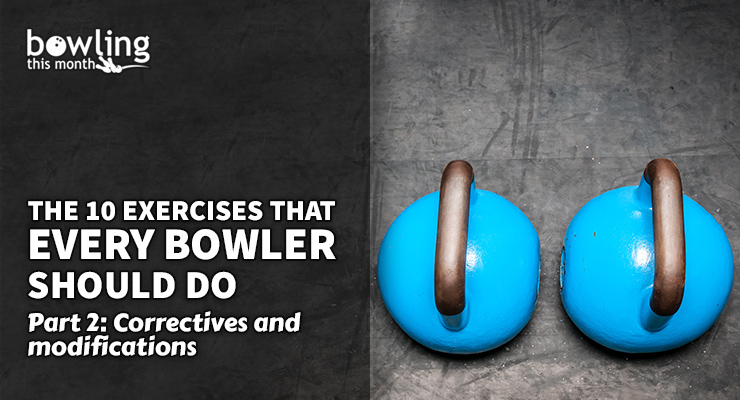Article Contents
- 1. Split squats modification: assisted split squats
- 2. Goblet squats modification: squat to a box with assistance
- 3. Deadlifts modification: glute bridges
- 4. Rows modification: seated band or cable rows
- 5. Pull-ups modification: lat pulldown
- 6. Turkish get-ups modification: half get-up or arm bar
- 7. Dead bugs modification: dead bug hold
- 8. Rotational medicine ball slams modification: banded rotations
- 9. Final thoughts
Note: This article is only available to Bowling This Month subscribers.
In my last article, I reviewed 10 exercises that every bowler should include in their training programs to be able to move more efficiently and develop strength to prevent injuries. While those exercises are baseline movements that I would start with for most individuals beginning a training program, someone who is completely new to training or who has had injuries in the past may struggle with some of those baseline movements.
When working with large groups such as high school and collegiate teams, strength and conditioning coaches may program one movement pattern for the entire team, but then provide individual modifications with regressions when we see an athlete who is unable to perform a movement safely. In this article, I will provide the regression for each of the 10 recommended exercises from the previous article. I highly recommend trying the baseline movements first, as sometimes we truly are stronger and more capable than we think.
I often get asked if male and female bowlers should be doing different exercises. The answer is no. A female bowler (or any athlete) can do the same exercises as a male bowler. Sex does not dictate the ability to perform functional movements. Age is also irrelevant. The exercises provided are recommended for anyone across the board. The only differences will be the intensity at which they are performed and the specific variations of the movements.
For example, at one of the facilities where I train, we have a 75-year-old couple in our adult general fitness group. There are also individuals who just graduated from college and competed in athletics in that group. They all do the same training program, but they each use different weights based on their individual strength levels. By no means should older adults stay away from heavier weights; they are just as ...
Already a premium member? Click here to log in.



 (Only
(Only 